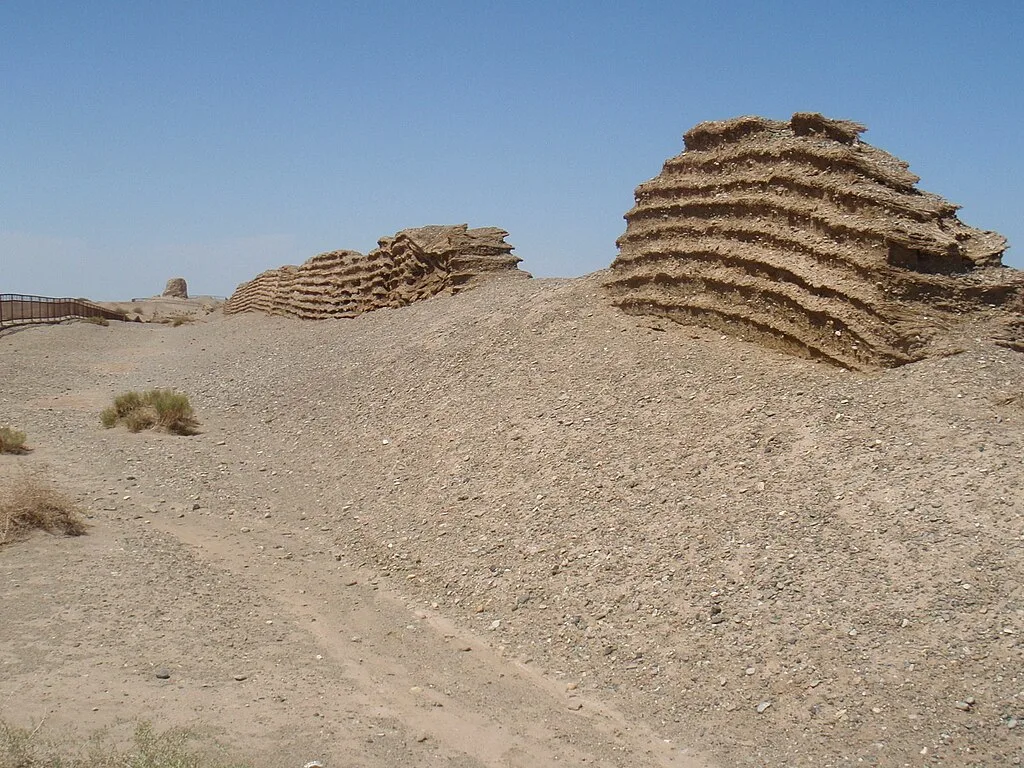A team of international researchers has finally unveiled the secrets of a long-mysterious structure known as the “Gobi Wall,” located in the arid expanses of southern Mongolia. Stretching over 321 kilometres (approximately 200 miles), the wall has long puzzled scholars with its scale and purpose. Now, a new study led by Professor Gideon Shelach-Lavi of the Hebrew University of Jerusalem, published in the journal Land, challenges conventional interpretations and redefines the wall’s historical role.
The Gobi Wall forms part of a larger network of medieval frontier infrastructure that spans approximately 4,000 kilometres across northern China and Mongolia. Constructed by various empires between the 10th and 13th centuries, the Mongolian section had remained largely unexplored until now. The latest research suggests that, contrary to the traditional view of such walls as purely military defences, the Gobi Wall functioned primarily as an administrative and logistical structure.
“The Gobi Wall was not simply a barrier against invaders. It was a complex mechanism designed to manage trade, control movement, and regulate resources in an exceptionally harsh environment,” the research team concluded.
Constructed from locally sourced materials such as rammed earth, stone, and wood, the wall often follows rugged mountain ridges rather than taking more accessible routes through plains. This, the researchers argue, may have served as a deliberate demonstration of imperial strength. The placement of the wall was further influenced by environmental considerations. The team identified over 400 ancient wells and mapped the distribution of saxaul shrubs, a vital construction material, to show how natural resources shaped the wall’s route.
Strategic Infrastructure of the Western Xia Dynasty
The findings suggest the wall is primarily associated with the Western Xia dynasty, a Tangut-led empire that flourished between 1038 and 1227 CE. Excavations at garrisons along the wall yielded a range of artefacts, including ceramics, coins from both the Western Xia and Northern Song dynasties, and animal remains, indicating significant activity during the 11th to 13th centuries.
Rather than being designed solely for defence, the garrisons functioned as administrative centres. They shared consistent architectural features like rectangular layouts, outer ditches, and corner towers, facilitating the regulation of population movements, trade, taxation, and distribution of resources.
Despite the strategic intent behind the wall’s construction, it failed to halt the Mongol expansion led by Genghis Khan in the early 13th century. The Secret History of the Mongols contains no reference to the wall as a military obstacle, underscoring the conclusion that its primary role was governance and not large-scale defence.
Environmental Integration and Lasting Legacy
The study also highlights the wall’s ecological context. By combining Soviet-era topographic data with contemporary satellite imagery, researchers demonstrated how the wall’s path was intricately linked to water availability and vegetation. The deliberate use of rammed earth, reinforced with stone and wood, illustrates a sophisticated adaptation to desert conditions.
Some wall segments were built along steep and remote ridges, a strategy likely intended to deter movement visually rather than physically. This combination of symbolic and functional design marks the wall as a multifaceted tool of imperial policy.
Although the Western Xia dynasty fell in 1227, evidence suggests that the site retained some significance in later centuries. Coins from subsequent Chinese dynasties, including the Qing, have been discovered, although scholars believe these were left by later travellers or local populations rather than indicating continued administrative use.
A Reappraisal of Ancient Frontiers
The study was supported by the European Research Council’s Wall Project, which represents one of the most comprehensive archaeological investigations of Inner Asia’s medieval frontier systems. It calls for a broader reassessment of how ancient empires governed their peripheries, urging historians to look beyond defensive functions and consider the wider socio-political and environmental dimensions of such monumental constructions.
As Professor Shelach-Lavi remarked, “This is a reminder that borders are not merely lines of division, but instruments of control, negotiation, and adaptation within complex landscapes.”
